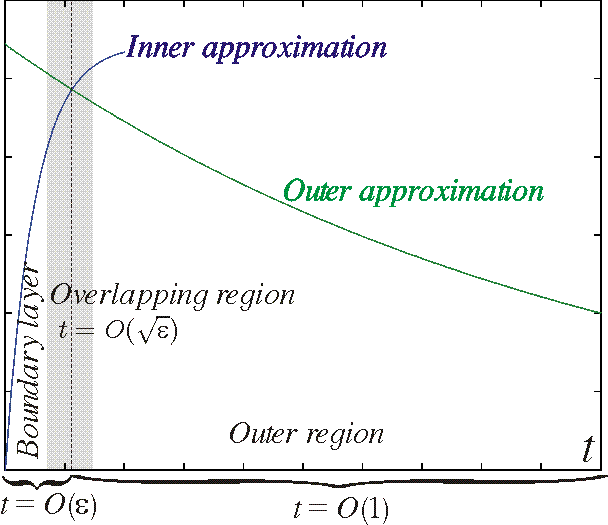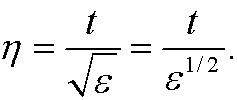
In the overlapping region we let

and introduce the intermediate variable


and outer

time scales. To be able to match the approximations we require that the outer and inner approximations (written with respect to the intermediate variable) must agree in the limit
that is

for a fix (positive) value of ![]() . in our case this means that
. in our case this means that

VWe realize that a=e and that our inner approximation therefore must be

Finally, we want to find a solution that is valid in all the interval [0,1]. We therefore construct yu from the inner and outer approximations minus their common limit e (since it otherwise would have been counted twice) in the overlapping region

When t is in the outer region the second term is small and yu is thus approximately
which is exactly the outer approximation. When t is in the boundary layer the first term is close to e and yu is thus approximately

which is exactly the inner approximation. In the overlapping region both the inner and outer approximations are approximately equal to e, which makes the sum of yi and yo close to 2e there, that is, twice as much as it should be. That is why we have to subtract the common limit from the sum. If we insert yu in the original differental equation we see that
dthat is, yu fulfills the equation exactly on the interval (0,1). If we investigate the boundary conditions we see that

The left condition is exactly fulfilled and the right is fulfilled up to

´for any n>0 , since

We thus see that yu is a unitly good approximation on [0,1].